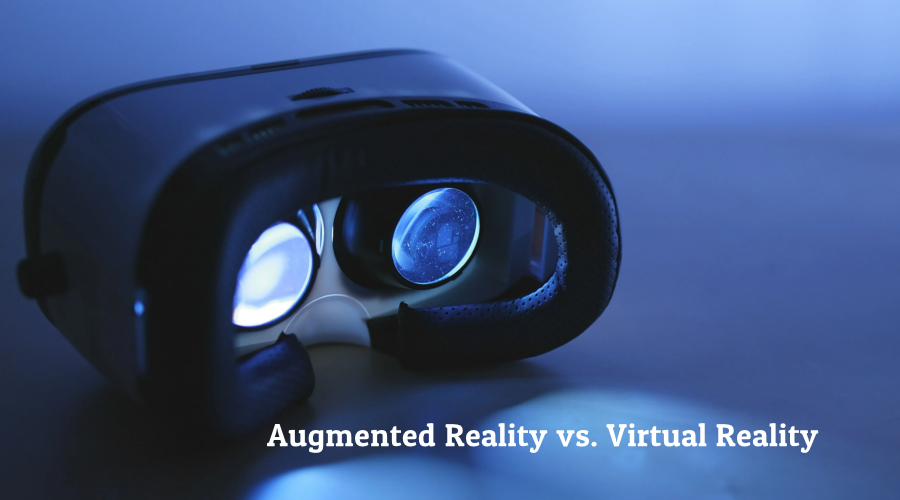In the rapidly evolving world of technology, Augmented Reality (AR) and Virtual Reality (VR) have emerged as two of the most exciting innovations. Both have the potential to revolutionise various industries, from gaming and entertainment to education and healthcare. But what exactly are AR and VR, how do they differ, and which one is poised to dominate the future? Let’s dive in.
Understanding Augmented Reality (AR)
Augmented reality enhances the real world by overlaying digital elements onto our physical surroundings. It doesn’t replace the real world but adds to it, often through the use of smartphones, tablets, or AR glasses. Popular examples include Pokémon GO and Snapchat filters.
Key Features of AR:
- Integration with Reality: AR overlays digital information onto the real world, allowing users to interact with both simultaneously.
- Accessibility: Most AR experiences are accessible through devices people already own, like smartphones and tablets.
- Applications: AR is used in various fields, including retail (virtual try-ons), navigation (Google Maps AR), and education (interactive learning).
Understanding Virtual Reality (VR)
Virtual Reality, on the other hand, creates a completely immersive digital environment. Users enter a simulated world, often using VR headsets like the Oculus Rift or HTC Vive, which block out the physical world entirely.
Key Features of VR:
- Immersive Experience: VR provides a fully immersive experience, transporting users to entirely different worlds.
- Hardware Requirements: VR often requires specialised equipment, such as headsets and controllers, to interact with the virtual environment.
- Applications: VR is widely used in gaming, training simulations (such as flight simulators), and virtual tours.
Key Differences Between AR and VR
While both AR and VR offer unique experiences, their differences are significant:
-
Reality Interaction:
- AR enhances the real world by adding digital elements.
- VR: completely replaces the real world with a virtual one.
-
Equipment:
- AR: Often requires only a smartphone or tablet.
- VR: Requires specialised hardware, including headsets and sometimes motion sensors.
-
User Experience:
- AR: Users remain aware of and can interact with their physical environment.
- VR: Users are fully immersed and isolated from the physical world.
-
Applications:
- AR: More practical for everyday applications like navigation, shopping, and education.
- VR: is primarily used for entertainment and specialised training.
Which Will Win: AR or VR?
Predicting the “winner” between AR and VR isn’t straightforward, as both have distinct advantages and potential applications. However, we can explore their future prospects based on current trends and technological advancements.
The Case for Augmented Reality
-
Wider Accessibility: AR’s reliance on existing devices like smartphones makes it more accessible to a broader audience. As AR technology becomes more sophisticated, its applications in daily life are likely to expand.
-
Practical Applications: AR’s ability to enhance real-world experiences gives it an edge in practical applications. From interactive educational tools to enhanced shopping experiences, AR is poised to integrate seamlessly into everyday life.
-
Business and Industry: Many industries are already leveraging AR for training, maintenance, and design. For example, AR can provide real-time data overlays for technicians working on complex machinery.
The Case for Virtual Reality
-
Immersive Experiences: VR’s strength lies in its ability to create fully immersive experiences. This makes it ideal for gaming, virtual tourism, and training simulations where complete immersion is beneficial.
-
Technological Advancements: As VR technology becomes more advanced and affordable, its adoption is likely to increase. Improvements in graphics, haptic feedback, and motion tracking will enhance VR’s appeal.
-
Entertainment and Education: VR offers unparalleled opportunities for immersive storytelling and learning experiences, making it a valuable tool for both entertainment and education.
The Future: Coexistence and Integration
Rather than one technology overtaking the other, AR and VR are likely to coexist and complement each other. Hybrid experiences that combine elements of both AR and VR are already being explored, offering the best of both worlds.
Potential for Integration:
- Mixed Reality (MR): This technology blends AR and VR, allowing digital and physical objects to coexist and interact in real time. Microsoft’s HoloLens is a prime example of MR in action.
- Cross-platform Experiences: Developers are increasingly creating experiences that can transition between AR and VR, providing users with flexible and adaptable applications.
Conclusion
In the debate between augmented reality and virtual reality, the question isn’t necessarily which will win, but rather how both can be leveraged to enhance our lives. AR’s ability to augment our reality and VR’s power to create entirely new worlds offer unique opportunities for innovation and growth.
As technology continues to advance, the lines between AR and VR may blur, leading to new experiences and applications we can only begin to imagine. For now, both technologies hold immense potential, and their future success will depend on how they evolve to meet the needs and desires of users worldwide.







